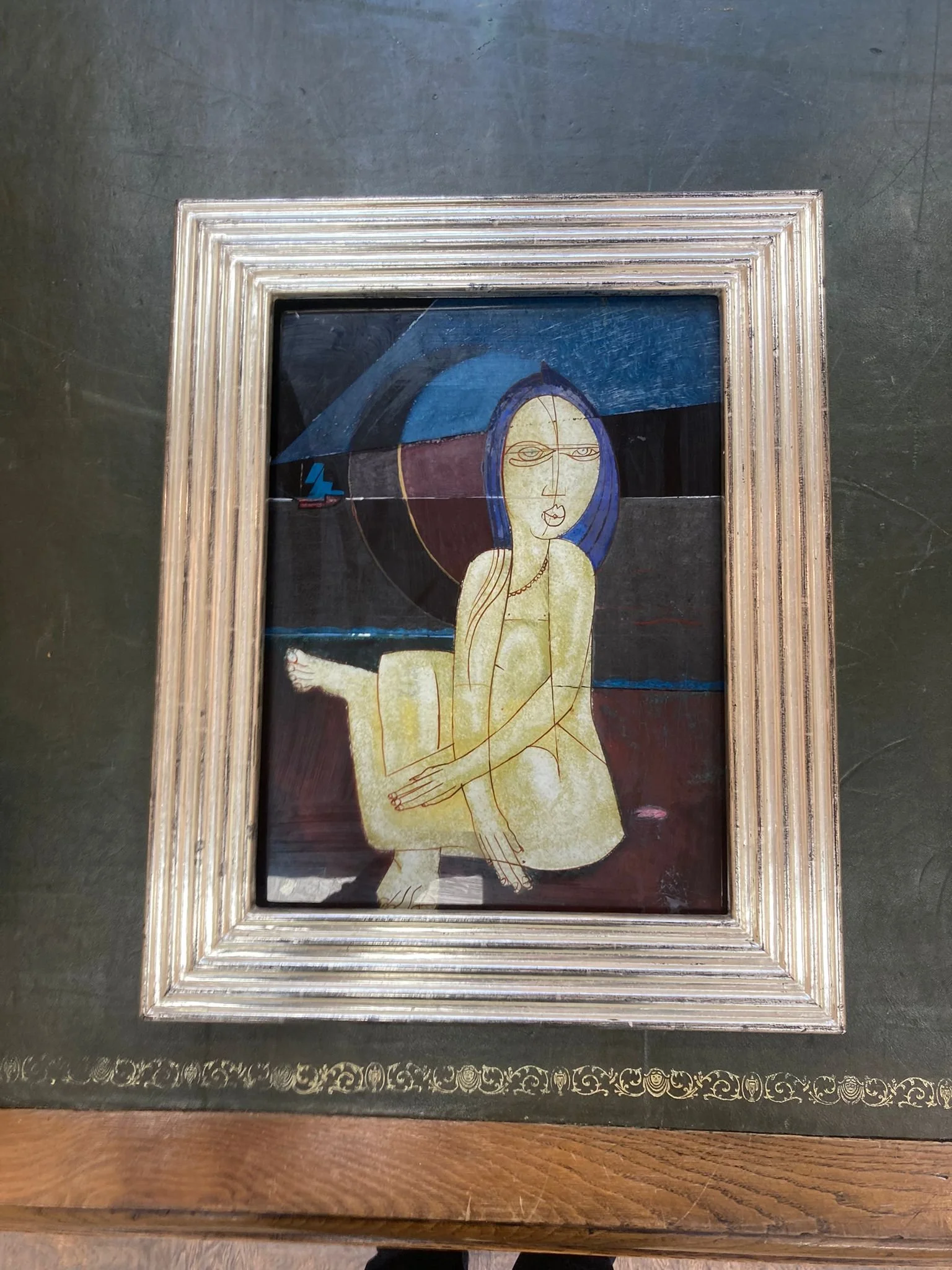Floris Jespers (1898-1965)




Floris Jespers (1898-1965)
Floris Jespers (1898-1965)
Resting Woman / Coquillage
églomisé 42 x 34 cm
signed ca 1924
Exhibited: Retrospective Floris Jespers, PMMK Ostend,
17 December 2004 - 10 April 2005
cat. n°. 112
We can compare this églomise with the one Floris Jespers gave the Dr. Reimond de Beir, as a fee for treating his son Mark, Het kruisteken van het havenmeisje (fig.3).
In that same year 1924, the Architect Huib Hoste designs a house for the Docter, in Knokke.
From that time on, Floris Jespers came regularly at the seaside, where he made his most sublime paintings and etchings.
A similar dated painting is Aquarium, (fig.4), in which we could talk about a “Disciplined Cubism” in the style of Lyonel Feininger.
It is at the, Salon Kunst van Heden, in the Stadsfeestzaal in Antwerp, in 1924, that Floris Jespers exhibits for the first time his paintings behind glass, a technique practiced by the Blaue Reiter group in Murnau.
Floris Jespers (1898-1965)
Floris Jespers is considered as one of the leading figures of the Belgian Modernist Movement during the interbellum. Shortly after WWOI, he frequented together with his brother, the sculptor Oscar Jespers and the Dadaist Paul Joostens, the circle around the activist and poet Paul Van Ostayen.
Van Ostayen was in correspondance with Pilippo Tommaso Marinetti in Italy and Herward Walden in Berlin.
He was well informed of the avant-garde movement at the time.
Jespers began his Avant-Garde style when young, during the First World War with seascapes in a constructivist style. Eventually, he flirted briefly with the Fauvism, under influence of Rik Wouters, around 1915-17. This style he abandoned in favour of more modernist work when he joined Brussels based Groups of Sélection and Centaure, the latter around the famous Gallery run by Walter Schwarzenberg.
In that period he can count as one of the leading Flemish Expressionists together with Constant Permeke, Gust De Smet and Frits Van den Berghe. It is then that Jespers produced his most inspired works. Such as Adam and Eve (1924), the Chess game (1926), Bonjour Ostende (1927), Salut, Messieurs! (1927).
Another specific aspect of Jespers work are his églomisé productions; Under influence of the work of Heinrich Campendonk, he started his first paintings behind glass in the mid twenties and kept painting on this medium throughout his entire career.
The subject matter of these glass paintings were mostly clowns.
In 1952, after he travelled for the first time to Belgian Congo, he came under the influence of the African Tribal Art.
His Congo period, is a very personal style, predominately representing large groups and market scenes. He translates the African art in a Cubistic style that was internationally in vogue.
The opinions about Floris Jespers’ talent remain, up till now, divided. Some see him as an epigone of many famous artists, like Wouters, Campendonck, Chagall, and even Constant Permeke.
Indeed, he had the knack of changing styles very frequently, but in all his pictures, he transcended the example and kept his artistic authenticity.
Beginning of 2005 The Museum for Modern Art in Oostende held an retrospective exhibition.